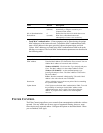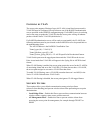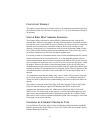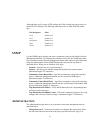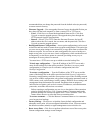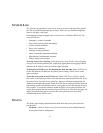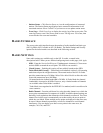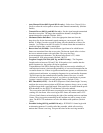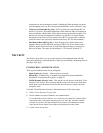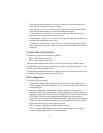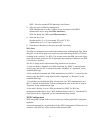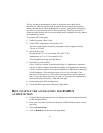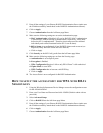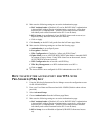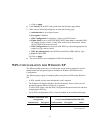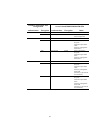41
synchronize to the incoming data stream. Enabling the Short preamble can boost
your throughput; however, this can cause interoperability issues. (Default: Long)
n Client Access Mode (802.11g only)—802.11g radios can support both 802.11b
and 802.11g clients. This option determines which mode the radio will operate in
and consequently which clients will be able to connect to the radio interface. The
default is to provide information for both 802.11g and 802.11b clients. Higher
throughput can be achieved if the option for the 802.11g clients only is selected
(since the radio is not required to transmit at the lower 802.11b rates/method).
n Data Beacon Rate (802.11g only)—Sets the interval at which a beacon will
contain a delivery traffic indicator message (DTIM). The Access Point sends a
DTIM to signal clients which are in sleep mode that a message is waiting to be
delivered to them. The range for this setting is 1-255 beacons. (Default: 2)
SECURITY
The Security page allows you to set up lower-layer client authentication and data
encryption parameters as described below. When you are finished configuring items on
this page, click Apply.
CONFIGURING AUTHENTICATION
Three types of authentication can be configured:
n Open System (the default)—Allows access to everyone.
n Shared Key—If Shared Key is enabled, Encryption must also be enabled as
described in “Configuring Encryption” on page 42.
n 128-Bit Dynamic Security Link—This option can only be used with other 3Com
Wireless LAN devices. The user name and password set on the access point must
match those set on the clients. Each network session creates a unique, one-time
encryption code.
To enable 128-bit Dynamic Security Link authentication, follow these steps:
1 Select 128-bit Dynamic Security Link.
2 Decide whether to require Windows user authentication:
If you check the Require Windows user authentication check box, clients will be
required to enter a user name and password every time they associate with the
network. If you leave this box unchecked, the system will authenticate clients
based on the access control list and the saved passwords on the clients.
3 Create a User Access List:



